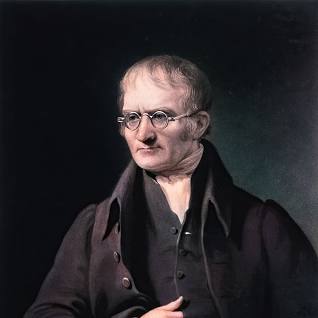
John Dalton
John Dalton was born in 1766 to a Quaker family in Eaglesfield, Cumberland, England. Even though he discovered one of the most known theories in chemistry today, he only received proper and formal education at a small school in his village until the age of 11.
John Dalton Life
Despite all the odds, he has influenced various scientific areas, such as meteorology, chemistry, and physics. However, he is most famous for developing one of the first atomic theories.
John Dalton endured a harsh childhood, working from a young age to support his family. After a few years of working at the school where he attended, he helped his brother run a boarding school. Here, he taught science, mathematics, Latin, Greek, and French. Then, when he turned 19, he became the school’s principal and served in this role for seven years.
John Dalton Education Life
When John Dalton turned 26, he became a mathematics and natural philosophy teacher at Manchester’s New College. During his years working as a principal, he considered studying law or medicine but was rejected by his family for being a Dissenter.
As a result, John Dalton faced many challenges and limitations in the professional and educational arenas. Despite the obstacles, Dalton went on to study color blindness, a condition both he and his brother suffered from. Eventually, he published his first scientific paper, “Extraordinary Facts Relating to the Vision of Colors.” Although his theory had many errors, the condition was named after him as Daltonism.
Subsequently, he published more research papers on various topics, such as heat conduction, gas expansion by heat, the properties of light, the aurora borealis, and meteorology. Also, after seven more years of being a teacher at Manchester, he left the school when the school was experiencing financial difficulties.
Afterward, he worked as a private science and mathematics tutor until the early 1800s, when he started lecturing in Manchester on his research about gasses and liquids. He shared novel ideas and analyses about the nature of gases, ultimately leading to the atomic theory’s discovery.
Two years after giving his lectures, he published his Law of Partial Pressures, which is still used in schools today. The Law of Partial Pressures says that in a mixture of non-reacting gasses, the total gas pressure is equal to the sum of the partial pressures of the individual gasses.
His study of gasses triggered his curiosity about what particular substances were composed of. After delving into relevant research, he recognized that the most significant obstacle in the study was to determine whether the idea proposed by Democritus- that everything was made of tiny particles called atoms, and those atoms could not be split into smaller particles–was correct.
This idea was a 2000-year-old mystery, but Dalton was determined to unsolve it. To do so, he conducted countless experiments and reactions, and after analysis of his results, he was able to conclude his atomic theory.
His atomic theory
His atomic theory, based on the law of conservation of mass and law of constant composition, consisted of six statements: the elements are made of atoms which are tiny particles invisible to the naked eye; all atoms of a particular element are the same; atoms of different elements have different properties: their masses and chemical reactions are different; atoms cannot be created, destroyed or split; in a chemical reaction, atoms link to one another, or separate from one another; atoms come together in simple whole-number ratios to form compounds.
John Dalton’s atomic theory was the first to describe all matter in terms of atoms and their properties. His theory also explained three laws: the law of conservation of mass, the law of constant composition, and the law of multiple proportions, and they serve as the foundation of modern chemistry and allow new scientific discoveries like nuclear energy.
Due to Dalton’s scientific contributions, he was invited to join the Royal Society in London, a prestigious science society. He declined their initial invitation in 1810; however, he eventually became a member in 1822, and in 1826, he received the Society’s Royal Medal for his atomic theory. Additionally, the French Academy of Sciences and the American Academy of Arts and Sciences elected him as their member in 1833 and 1834, respectively.
Despite many uncertainties and struggles, John Dalton stayed firm on his aspirations and pursued his interests in the sciences. Despite the inadequacies he encountered as a child, being color blind and being rejected by his family, he went on to transform the field of science. After he died in 1844, more than 40,000 people visited Manchester Town Hall, where his body was placed, to pay their respects.
By: Haemin Yun
Write and Win: Participate in Creative writing Contest & International Essay Contest and win fabulous prizes.


